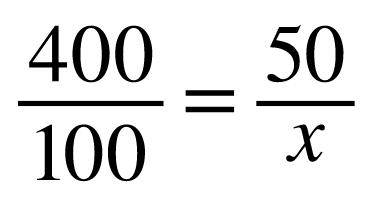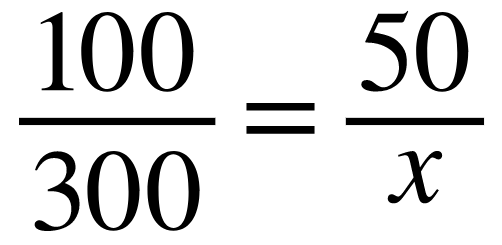Betting Odds
Payout Paradise uses American Odds displaying betting odds for bets. American Odds looks like -150, +230, or any other three-digit number with a +/- in front of it.
What Do the + and – Mean in Sports Betting?
The – and + on a sports betting line indicates both your prospective payout and whether you’re betting on the favorite or the underdog.
Negative numbers signify the favorite on the betting line. The negative number indicates how much you’d need to bet to win $100.
If the number is positive, you’re looking at the underdog, and the number refers to the amount of money you’ll win if you bet $100.
For Example:

Many popular wagers, including most point spread bets, will see both sides with negative odds. Because the point spread serves to level the playing field between two sides, you’ll often need to risk more than you profit when betting on the spread.
Calculating Winnings with American Odds
In order to win $100 on the Buccaneers (favorites), you’ll need to wager $400. If you wagered $100 on the Cowboys (underdogs), you’d be set to win $300.
If you bet $50 on the Buccaneers (-400), your equation would look like this:

- Cross-multiply to get 400x = 5000, and then solve for “x”
- x = 5000/400
- x = 12.50
Therefore, if you wager $50 on the Buccaneers, you will win $12.50, and your total payout would be $62.50 (your original wager plus your winnings).
If you bet $50 on the Cowboys (300), your equation would look like this:

- Cross-multiply to get 100x = 15000, and then solve for “x”
- x = 15000/100
- x = 150
Therefore, if you wager $50 on the Cowboys, you will win $150, and your total payout would be $200 (your original wager plus your winnings).
The Moneyline Made Easy
When you think about sports betting, the first wager type that comes to mind is probably the moneyline. The moneyline bet is a straight-up wager on who wins a game, fight, or any other matchup.
When making a fundamental moneyline bet, you’re simply selecting the outright winner of a single game. This is the most straightforward bet you can make.

To place your bet, all you need to do is click on the moneyline number attached to the team you believe is going to win the game. If you think Tampa Bay will win, click on the -400. If you like Dallas, click on the 300.
From here, your pick will be added to a bet slip where you be asked to enter the amount you wish to risk on your moneyline wager. So, how can you tell how to calculate your payout on the moneyline?
Breaking Down the Moneyline
The numbers next to each team on the moneyline are American odds which we learned about above. These odds indicate each team’s implied probability and determine how much money you would win, based on your wager.
The team that has a “+” sign next to their odds is the underdog, while the team with “-” next to their odds number is the favorite.
In some cases, both teams will have “-” signs next to them. In this case, the team with the number farther from zero should be regarded as the favorite (eg. -120 would be the favorite over -105).
Because the bet will be harder to win, you will always receive a higher payout when you bet the underdog on the moneyline. Of course, the risk of losing such a bet is also substantially higher.
Winning Moneyline Bets
At this stage, you might be wondering how you can win moneyline bets. Let’s revisit the Tampa Bay (-400) vs. Dallas (300) moneyline example.
If you bet $100 on Dallas at 300 moneyline odds and they win the game, you win $300 for a total payout of $400. On the flip side, you need to successfully wager $400 on Tampa Bay to win $100 for a potential payout of $500.
When it comes to moneyline betting, the lines with a plus symbol tell you the amount of money you’d win on a $100 wager, while odds with the minus sign indicate the amount you need to bet to win $100.
Moneyline wagering is a relatively easy concept to understand once you get the hang of it.
What Is Point Spread Betting?
Point spread betting is all about leveling the playing field between two mismatched teams. Rather than picking a team to win outright as you would with a moneyline bet, with spread betting the margin of victory determines the outcome of your wager.
The spread is sometimes referred to as the great equalizer because it’s designed to turn every matchup into a 50/50 proposition. The important thing to remember is that even if your team wins the game, it doesn’t necessarily mean you’ve won your spread bet.
As we explained with moneyline betting, a negative (-) number of points indicates the favorite and a positive (+) number of points indicates the underdog. To “cover the spread,” favorites must win by more points than the spread, while underdogs must not lose by more points than indicated.
Lets Try a Point Spread Example
Lets use the same game from above as an example for Spreads

As you can see, in the above example, the Tampa Bay Bucaneers are the favorite in this game by 7.5 points, since they have a negative number of points. You will often see half-points attached to the point spread to avoid “pushes,” or ties. Games with half-point spreads are said to contain a “hook.”
In this circumstance, favored Tampa Bay is said to be “laying” 7.5 points. This means you subtract 7.5 points from their total score when the game concludes. If they still have more points than the Cowboys, then they “covered.” Therefore, the Bucanneers will have to win the game by at least 8 points for you to win your bet.
While Tampa Bay is “laying” 7.5 points, Dallas is “getting” 7.5 points. This means you add 7.5 points to their final score when the game concludes. If, after doing so, they have more points than the Buccaneers, then they “covered.” So, in order to win your bet, the Cowboys just cannot lose the game by 8 points or more. For example, if the Cowboys only lose by 3 points, you would win if you bet on Dallas.
Here are a couple of mock outcomes for our matchup, each with a varying margin of victory. The team who covered the spread is displayed in bold.
- Dallas 21 – Tampa Bay 24
- Dallas 17 – Tampa Bay 25
- Dallas 3 – Tampa Bay 41
- Dallas 30 – Tampa Bay 27
- Dallas 28 – Tampa Bay 34
Notice that in two of the above examples, Dallas lost the game, but won against the spread. This is because they lost by fewer points than the point spread indicated.
How does Totals Betting Work?
In the following game, we have set the total points (to be scored in the game) at 50.5. The number appears twice to give you the odds for picking both “over” and “under.”

So, if you believe that the scores of both Dallas and Tampa Bay will combine to equal more than 50.5 points, you’ll want to bet on “the over.” If you believe it will be a defensive game with fewer than 50.5 total points scored, you’ll definitely want to bet on “the under.”
We’ve used an NFL line in our example, but totals bets are available on any sport that involves point totals.
How Do Payouts on Totals Betting Work?
In our example, you’ll notice that the odds corresponding to both the over and under have -110 next to them. Just like the moneyline, the odds attached to the over and the under indicate the prospective payout.
The odds attached to the over and the under indicate the prospective payout.
In the above example, it’s impossible to double your money by betting on either the over or the under. This is a relatively common practice on over/unders, as sportsbooks usually decide that there is an equitable probability of the point total moving in either direction. However, this is far from being set in stone.
Regardless of the sport, if there are two notoriously high-scoring teams with shoddy defenses, you may see your sportsbook assign the over as the favorite. Similarly, if both teams’ scoring is known to be lower than average, you might see the favorite gravitate heavily towards the under.